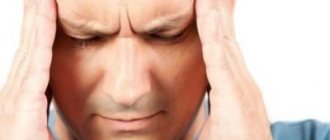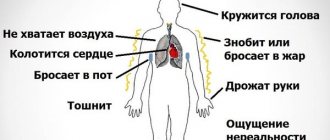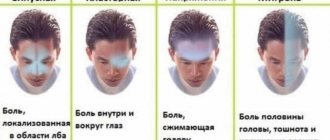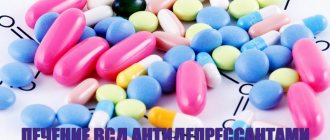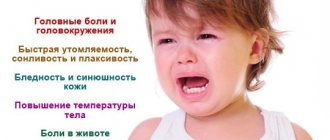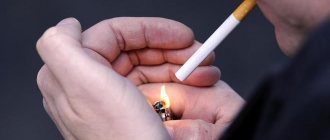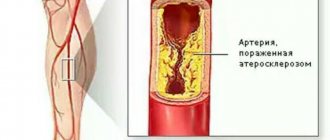Vegetative vascular dystonia in children is a diagnosis that is often made by a doctor when the child’s health is unsatisfactory and not progressing.
At a young age, a child, even if he can already speak a little, is not able to clearly explain his illness. In case of deterioration of the functional state. Teenagers, although they can adequately express their thoughts, are often unable to coherently describe their poor health.
The doctor calls this inexplicable condition (the disease is not recorded based on the objective results of surveys and tests).
Yes, the diagnosis of “ vegetative vascular dystonia ” does not seem to pose a threat to the child’s health at the moment. But parents should understand that vascular dystonia is most often a harbinger of the possible development of some pathology. That is, in the nervous system (specifically in the vegetative section) a failure of the regulatory function occurred.
This failure leads to destabilization of life support systems, which can lead to a number of diseases. By not engaging in treatment, which should be determined by the doctor, parents are dooming the child in advance to possible unpleasant consequences.
Vegetative vascular dystonia in children - what is it?
Vegetative vascular dystonia in children is a complex of functional disorders in the work of various organs and systems associated with an imbalance between the work of the sympathetic and parasympathetic nervous systems.
For reference. Every parent must understand that his child suffers psycho-emotional overload when visiting a kindergarten, school or other places where people (children) are unfamiliar to him and the conditions of communication with them.
This is obvious - it transfers. And what other ones! An adult with an established psyche and life experience, coming to a new team, feels psycho-emotional overload. But an adult partly knows how to “control himself.” But a child with a developing psyche is unlikely to be able to control himself (read: his nervous system).
Vegetative vascular dystonia in a child can manifest itself in the form of a complex of cardiac, respiratory and neurotic syndromes, impaired thermoregulation and vegetative vascular crises.
According to official medical statistics, symptoms of vegetative-vascular dystonia are recorded in almost 80% of children and adolescents. The first symptoms of VSD in children most often appear at the age of 6-8 years and in adolescence.
In girls, symptoms of vegetative-vascular dystonia are more common than in boys.
Let us recall that in pediatrics (and not only) the diagnosis of VSD is not considered as an independent nosological unit (specific disease). When receiving this diagnosis, you must contact a specialist: pediatric cardiologist, pediatric endocrinologist, pediatric gastroenterologist, etc.
Pay attention to the fact that pediatric and adult doctors are different professions in terms of applied aspects (different approaches to diagnosis and treatment).
Children under 5 years old
The category “under 5 years” also includes infants, for whom the diagnosis of VSD is made by exclusion. Otherwise, it is a diagnosis of exclusion.
Naturally, the baby is in no way able to convey his complaints about his health. Therefore, the pediatrician examines the child to rule out possible causes of the current condition. Which may lead to the idea that there are violations of the regulatory system.
From the age of possible start of attending kindergarten, the risks of psycho-emotional overload increase:
- a stranger (the teacher) begins to establish his own routine, which is unusual for the child,
- unfamiliar children lay claim to their favorite toy,
- daytime rest (sleep) at a strictly defined time.
For reference. A child with an unstable psyche finds himself in new conditions, some of the rules of which he does not like. This is psycho-emotional overload in its purest form. What is the reaction of the child’s nervous system? An attempt at adaptation. And this attempt is not always successful.
As a result:
- appetite decreases, which leads to weight loss,
- irritability and moodiness develop,
- sleep deteriorates, and, consequently, recovery and the child experiences fatigue,
- Colds become more frequent.
These are not all possible results, but they occur very often. These are not symptoms of the disease. This is precisely vegetative-vascular dystonia, which can result in any disease.
VSD in children under 10 years of age
In this age category, children can already partially formulate their health problems. The diagnosis of VSD in children of this category most often falls within the period of 7 years. Before this, everything was already settled with the kindergarten. The child got used to it and there were fewer stressful situations.
But from the age of seven, neurologists note two periods of risk for the development of VSD:
- admission to school,
- restructuring of the endocrine system.
In any case, psycho-emotional overloads arise due to the complexity of the curriculum, joining a new team, changing the daily routine, and overwork.
For reference. Limitation of physical activity also plays a depressing role. Sitting in class (at least 30 minutes). Sitting at the computer for a long time is also mixed in. This is exactly the age of mastering the Internet space.
As a result:
- insomnia,
- headaches with dizziness,
- increased fatigue,
- memory loss,
- spontaneous shortness of breath,
- periodic increases in body temperature.
Illness of adolescence
AN INCREDIBLE STORY THAT WILL SHOCK MANY: “My name is Olga, I’m 38 years old. My lower back hurt very badly. I came to the hospital and they did an MRI and said: “You have a hernia and grade 4 osteochondrosis . Get ready for surgery ." I almost fainted there! Horrible! What surgery, I'm only 38? It turns out that even at this age you can develop grade 4 osteochondrosis. But it all started with ordinary lower back pain , which then became chronic, aching, and then a lumbar hernia formed! She made it difficult to sleep and walk. I refused the operation because I was afraid of the anesthesia: I might fall asleep and never wake up again. I also have heart problems. As a result, they prescribed me a bunch of useless medications, and when I returned, the doctors simply shrugged their shoulders, saying, what do you want, you have to do an operation... A couple of months ago, on the Internet, I came across an article that literally saved me. I regained my health and the pain went away! I am so grateful to fate, to the incident that brought me to this article! Finally my spine is healthy, all thanks to this article! Anyone who has BACK AND JOINT PAIN is a MUST read! Now there is NO PAIN, I sleep normally, walk and work in the country.” Read more"
Very often, the occurrence of VSD symptoms is directly associated with the adolescence of adolescents. Often, all signs of the disease disappear without a trace after the formation of sexual function is complete, but in other cases the disease requires responsible and comprehensive treatment.
Attention! VSD in adolescents is not a disease, but a syndrome with a set of various symptoms that are responsible for the vital functions of various human organs and systems.
The causes of VSD include:
Japanese rheumatologist: “Do you have a sore Back and Joints? A new safe treatment method at home!” Good article, must read"
Smoking and alcohol stimulate the appearance of VSD in adolescents
- unhealthy lifestyle, excessive alcohol consumption, smoking, drugs;
- infectious diseases;
- frequent stressful situations;
- neurosis;
- first love experiences.
Vegetative vascular dystonia in children - causes
The appearance of vegetative-vascular dystonia is based on an imbalance in the functioning of the autonomic nervous system. Normally, its sympathetic and parasympathetic departments work harmoniously and regulate each other’s activities. When the balance between the work of the parts of the autonomic nervous system is disturbed, VSD develops.
In young children, symptoms of vegetative-vascular dystonia are most often caused by:
- prematurity and low birth weight;
- intrauterine fetal hypoxia and asphyxia during childbirth;
- toxicosis of pregnancy in the mother (especially late severe gestosis);
- birth injuries;
- intrauterine infections;
- intrauterine growth retardation;
- delayed physical development;
- malnutrition.
For reference. In older children, symptoms of vegetative-vascular dystonia may be associated with chronic somatic diseases, endocrine disorders, previous infections, injuries, anemia, excessive emotional stress, stress, lack of sleep, disturbances in sleep and rest patterns, and insufficient physical activity.
In adolescents, symptoms of vegetative-vascular dystonia are usually caused by hormonal changes in the body.
The intensification of VSD symptoms and the development of vegetative-vascular crises is facilitated by:
- stress, psycho-emotional and physical stress;
- disturbance of sleep and rest patterns;
- poor nutrition;
- lack of timely treatment of concomitant diseases;
- prolonged overwork;
- smoking.
Treatment method
Treatment is prescribed by a doctor individually
The choice of treatment methods for VSD depends on the severity of the disease and the individual characteristics of the body. In any case, therapy should be carried out with an integrated approach.
Among medications for the treatment of VSD in adolescents, the following groups are used:
- Beta blockers. Metoprolol, Anaprilin, Cordanum are considered effective. These drugs contribute to the normal functioning of the heart and nervous system.
- Calming agents. Persen, Novo-Passit, Glycine, Fitosed, Afobazol, Glycised, as well as tincture of valerian, peony, motherwort mint, and lemon balm have a positive effect on nerves and normalization of sleep.
- Antioxidants. Typically, teenagers are prescribed Selesan, Teravit-Antioxidant, Undevit, Antioxicaps, Vitrum-Antioxidant. These medications protect cells from destructive processes.
- Drugs that activate metabolic processes in the brain. To improve memory and attention, and stimulate brain function, Encephabol, Phezam, Ginkgo Biloba, and Nootropil are used.
- Antihypertensive drugs. Biprol, Equator, Dopegit or Enalapril are used to normalize blood pressure.
These medications must be prescribed by a qualified healthcare professional. Self-medication is fraught with aggravation of the situation and the development of complications.
Usually, the use of medications is necessary when dystonia worsens a teenager’s quality of life (prevents them from living and learning fully) and causes severe symptoms. The duration of therapy lasts up to six months.
More information about VSD can be found in the video:
Classification
A unified classification of vegetative-vascular dystonia in children has not been developed.
For reference. Depending on the etiological signs, vegetative-vascular dystonia in children can be psychogenic (neurotic), infectious-toxic, dishormonal, essential (constitutional-hereditary) and mixed.
Based on the type of autonomic disorders observed, it is customary to distinguish sympathicotonic, vagotonic and mixed variants of vegetative-vascular dystonia in children.
Depending on the prevalence of disorders in the autonomic nervous system, generalized, systemic and local forms of the disease are distinguished.
According to the type of symptom complexes observed in a child, it is customary to distinguish the cardiac, respiratory, neurotic type of VSD, VSD with impaired thermoregulation, VSD of hypertonic, hypotonic and mixed types, VSD with vegetative-vascular crises.
According to the severity of the observed symptoms, VSD can be mild, moderate and severe, and according to the type of course - latent, permanent and paroxysmal.
Modern treatment technologies
Effectiveness is achieved through a combination of preventive, medicinal and non-medicinal methods. Before starting treatment for vegetative-vascular dystonia in children, protect your baby from stressful situations. Stop swearing, reduce the impact of school load as much as possible. Love and peace - this is what should reign in the family.
Medicinal herbs can also help, but here it is necessary to give preference to herbs with a sedative effect:
- lure;
- Eleutherococcus;
- aralia;
- motherwort;
- ginseng;
- valerians;
- Leuzsee;
- hawthorn.
Symptoms of VSD in children under 10 years of age
Symptoms of vegetative-vascular dystonia in young children may appear:
- constant weakness, drowsiness, lethargy;
- tearfulness, moodiness and frequent mood swings;
- lability of blood pressure (blood pressure may drop below normal or increase significantly);
- anxiety, phobias, suspiciousness, increased sensitivity;
- attacks of dizziness and headaches;
- tachycardia (increased heart rate);
- decreased memory, deteriorated ability to concentrate, decreased ability to assimilate new information;
- increased sweating (increased with nervous tension).
Also, the child may experience an alternation of increased nervousness with depressive moods and periods of apathy.
For reference. Frequent and characteristic complaints with vegetative vascular dystonia are sensations of incomplete inspiration, lack of air and discomfort when trying to take a deeper breath.
Thermoregulatory disorders in children with vegetative-vascular dystonia are manifested by chilliness, attacks of chills, and poor tolerance to cold or heat.
Also, parents are often concerned about the child’s poor appetite and the fact that he is not gaining weight well (children with vegetative-vascular dystonia, as a rule, have an asthenic physique).
In cardiac syndrome, patients with vegetative-vascular dystonia are concerned about rapid heartbeat, weakness, increased or decreased blood pressure, sensations of “interruptions” in the heart’s function or a feeling of “fading” of the heart. Mild arrhythmias are also often observed; irregular extrasystoles are less often recorded.
For reference. Disturbances in the gastrointestinal tract can be manifested by nausea (especially in the morning), bloating, diarrhea or periodic constipation, cramping abdominal pain.
Quite often, children with VSD experience:
- increased skin greasiness;
- excessive skin sensitivity;
- the appearance of red dermographism (red marks on the skin after rubbing with a nail);
- frequent urination;
- tendency to fluid retention and edema.
What symptoms can be used to identify VSD?
Pathology most often manifests itself during periods of active growth of the baby - these intervals are associated with the rapid development of the autonomic system. Dominance of vagal tone has clinical consequences.
Here is a complete list of signs of the disease:
- lack of appetite with excess body weight;
- fear of closed spaces and stuffy rooms;
- decreased activity of the baby;
- timidity;
- cold intolerance;
- unexplained pain in the abdomen;
- chilliness;
- feeling of lack of air;
- constant sighs, “lump in throat”;
- nausea;
- allergic reactions;
- marbling of the skin;
- vestibular disorders;
- high level of sweating;
- urge to urinate (frequent), strong salivation;
- puffiness under the eyes;
- constipation of spastic nature.
Negative phenomena in the area of the heart and blood vessels are also observed. Blood pressure decreases and heart rate becomes slower. There is an illusion of an “increase” in the size of the heart.
If VSD is accompanied by sympathicotonia, you should pay attention to the following signs:
- decreased pain sensitivity;
- hot temper;
- mood swings (lability);
- absent-minded attention;
- feeling of heat, increased heartbeat;
- predisposition to neurotic conditions;
- paresthesia in the limbs;
- pale skin, cold extremities, white dermographism;
- unmotivated increases in temperature;
- polyuria.
Vegetative vascular dystonia in adolescents
Symptoms of vegetative-vascular dystonia in adolescents are practically no different from the manifestations of VSD in children under 10 years of age. However, in adolescents, symptoms of VSD are often more intense and occur more frequently. Also, so-called vegetative-vascular crises are more often recorded in them (in children under 10 years of age, vegetative-vascular crises are recorded in isolated cases).
Exacerbation of symptoms of vegetative-vascular dystonia in adolescents is due to hormonal and metabolic changes in the body.
For reference. Most often, vegetative vascular dystonia in adolescents is manifested by irritability, weakness, drowsiness, increased blood pressure (less often decreased blood pressure), tachycardia and impaired thermoregulation. Quite often there is increased sweating and insomnia.
Also, shortness of breath, decreased tolerance to physical activity, rapid fatigue, memory loss, impaired attention, and fainting are often recorded in adolescents (especially in girls with hypotonic VSD).
Non-drug therapeutic effects
Excessive drug load can lead to unnecessary problems in the child’s body. Therefore, it is always worth starting the treatment of VSD in children with non-drug methods of influence. Actually, this therapy is considered basic. We are talking primarily about compliance with the regime:
- walks in the open air;
- 9 hours sleep;
- limiting the academic load (lessons need to be done, but breaks are organized between them);
- physiotherapy;
- balanced healthy diet;
- psychotherapy;
- reducing the time spent by the child near the computer and other electronic devices associated with information flows (mobile phone, TV);
- moderate physical activity;
- water procedures;
- therapeutic massage and electrophoresis;
- music lessons;
- acupuncture.
Herbal medicine is also recommended - the use of lemon balm (neurotic form of the disease) and chamomile (digestive disorders). Bromine electrophoresis (the collar area is treated) and electrosleep are considered effective physiotherapy procedures.
Among the useful sports disciplines are:
- tennis;
- swimming;
- skates;
- skis;
- outdoor games.
Diagnosis of VSD in children
Since the symptoms of vegetative vascular dystonia in children are quite nonspecific, diagnosis often presents quite difficulties. To make a diagnosis of VSD, it is necessary to exclude all possible causes of pathological symptoms.
If a child has complaints of nausea, abdominal pain, stool disorders, or loss of appetite, possible diseases of the gastrointestinal tract (peptic ulcer of the stomach and duodenum, gastritis, chronic pancreatitis or cholecystitis, irritable bowel syndrome) should be excluded.
In a child with cardiac syndrome with vegetative-vascular dystonia, diseases of the cardiovascular system (including congenital and acquired heart defects, arterial hypertension, rheumatism, endocarditis) should be excluded.
In the presence of severe shortness of breath, bronchial asthma should be excluded.
It is also necessary to exclude neuroses, depression and other mental disorders, thyroid diseases, and elevated cortisol levels.
For reference. To exclude all possible causes of VSD symptoms, the child should be examined by a pediatrician, cardiologist, gastroenterologist, neurologist and endocrinologist.
A comprehensive examination is also mandatory, including:
- general blood and urine tests;
- electrocardiogram and ultrasound of the heart;
- electroencephalogram;
- fibrogastroduodenoscopy;
- Holter monitoring;
- blood pressure control;
- Ultrasound of the adrenal glands, gastrointestinal tract and thyroid gland;
- hormonal profile study;
- blood chemistry.
Causes
The syndrome develops gradually under the influence of a number of negative factors.
Pediatricians believe that the main reason is excessive stress on the central nervous and vascular systems. First you need to understand that the human body needs strict regulation of the autonomic system. Internal organs and blood vessels are controlled by the autonomic nervous division. The slightest disturbances in interaction lead to disastrous consequences - VSD in children and adolescents with a whole “bouquet” of concomitant pathologies.
Here are the main causes of violations:
- rapid development of technogenic civilization;
- introduction of household chemicals and genetically modified products;
- hereditary predisposition;
- pregnancy pathologies;
- features of the constitution;
- brain injuries;
- increasing the intensity of information flows;
- socio-economic factors (family conflicts, increased pace of life of parents, frequent moves, stress at school);
- chronic infections (tonsillitis, caries, sinusitis);
- mental illness;
- toxic nerve damage;
- diseases leading to metabolic disorders in the body (heart and kidney pathologies, diabetes mellitus).
The main cause of dystonia is a stress factor. A high school load and an increased volume of educational programs are the main enemies of the modern child. It is difficult to avoid this, so it is worth thinking about relaxation and a change of activity. Below we will look at the symptoms of the disease.
There are threats closely associated with the development of VSD. We are talking about related pathologies. Vegetative-vascular dystonia in children can be accompanied by rather strange symptoms, among which are viral diseases, high blood pressure, and stress conditions.
These signs may indicate the development of the following ailments:
- infectious and inflammatory heart diseases;
- arrhythmia;
- Itsenko-Cushing syndrome;
- heart disease (changes in the heart muscle);
- bronchial asthma;
- Graves' disease;
- mental disorders.
The course of the pathology can be accompanied by a large number of syndromes (there are about thirty in total). With senestopathy, pain “wanders” to different points of the body, changing its intensity and location. From the digestive side, abdominal pain, diarrhea, constipation, nausea and a banal loss of appetite may be observed.
If thermoregulation is impaired, you will experience regular (daily) low temperatures.
Here are a couple more examples:
- vascular syndrome (arterial hypertension and hypotension);
- cardiac syndrome (heart pain, disruptions in the normal functioning of the heart);
- respiratory syndrome (shortness of breath, difficulty breathing);
- neurotic syndrome (changeable mood, dizziness, fatigue, sleep disturbances and frequent headaches).
Treatment of VSD in children
The treatment regimen depends on the prevailing symptoms. Drug therapy is used only when non-drug treatment is ineffective.
General recommendations for the treatment of vegetative-vascular dystonia in children include normalization of sleep and rest patterns, normalization of physical activity. Active sports (dancing, swimming, cycling, roller skating) have a good effect.
For reference. To relieve emotional stress, breathing exercises, the use of auto-training, music or drawing may be recommended.
A visit to a child psychologist may also be recommended.
It is effective to use physical therapy methods: massage, electrophoresis on the collar area, pine baths, therapeutic showers, reflexology.
An important role is played by the treatment and prevention of concomitant diseases that can cause exacerbation of VSD symptoms.
It is also recommended to exclude physical overexertion, fatigue and stress.
Additionally, it is recommended to monitor the child’s nutrition. It is necessary to exclude the consumption of fatty, fried, spicy foods, soda, and reduce the consumption of flour and sweets. Food should be healthy and easily digestible.
If non-drug treatment is ineffective, symptomatic therapy is carried out aimed at reducing the severity of symptoms of vegetative-vascular dystonia in the child.
Most often prescribed:
- general strengthening vitamin complexes (the complex must contain B vitamins and magnesium);
- herbal sedatives.
For abdominal pain and headaches, antispasmodics may be prescribed. To improve cerebral circulation and improve metabolic processes in brain tissue, Piracetam and Mildronate can be prescribed. In combination with Coenzyme 10, Mildronate is also used to treat cardiac syndrome in VSD.
For VSD of the hypertensive type, antihypertensive therapy is selected. Children with severe psychosomatic disorders, depression or neuroses may be prescribed psychostimulants, tranquilizers or antidepressants.
For reference. Drug treatment is prescribed in short courses, only to relieve the main symptoms. In the future, preventive maintenance treatment and non-drug therapy are recommended.
Reasons to worry
JAPANESE RHEUMATOLOGIST : “Surprisingly, most people are ready to take any medications for osteochondrosis, arthrosis or arthritis without even thinking about the side effects. Most of these drugs (Movalis, Diclofenac, Ibuprofen and others) have many side effects such as: stomach ulcers, migraines, anemia, asthma, rash, soft tissue necrosis from constant injections and much more. In Japan, these drugs were treated 10 years ago, now our most effective remedy is...” Read more"
The syndrome and its accompanying symptoms negatively affect the general well-being of a teenager. Which can lead to problems with academic performance, causing new stress and frustration. And also serious violations:
- cardialgia;
- tachycardia;
- hypertension;
- weakening of the immune system.
Such ailments threaten the occurrence of strokes and heart attacks in the future.
Diagnostic and therapeutic measures
The doctor, examining such a patient, finds out his complaints. If there is a suspicion of VSD, the patient must undergo a series of examinations to clarify the diagnosis.
Diagnostic methods:
- Blood test to study hormonal levels.
- Ultrasound diagnosis of the thyroid gland.
- Examination by specialists, neurologist, endocrinologist, psychiatrist, ophthalmologist.
- ECG (electrocardiogram).
- Ultrasound of blood vessels in the brain.
- MRI of the head.
Therapy methods
Typically, vegetative-vascular dystonia in adolescents is diagnosed at the initial stage of its development, so drug treatment is not required. Drugs are prescribed only in a third of cases of this disease in children of puberty.
Treatment of vegetative-vascular dystonia in adolescents is based on restoring the correct daily routine and nutrition. General recommendations for improving the child’s condition must be taken into account, otherwise the patient’s condition will not stabilize.
Rules for normalizing the condition:
physical activity within moderate limits. Cycling, jogging, swimming, walking outside;
- sleep and rest at least 9 hours a day;
- taking medicinal baths with the addition of sea salt and pine needles;
- cold and hot shower;
- massages of the cervical region, head, back.
The patient's diet must also be correct. General dietary recommendations should be followed. Parents need to carefully monitor the implementation of all doctor's prescriptions.
Nutrition rules:
- the dishes should contain enough proteins, fats, carbohydrates;
- you need to almost completely eliminate salt, smoked foods, and spicy foods from your diet;
- it is necessary to increase the consumption of magnesium-containing products: buckwheat and oatmeal, soybeans, carrots;
- potassium should also enter the body in increased volumes: dried fruits, beets, beans, tomatoes.
In addition, the doctor may prescribe a course of physiotherapeutic treatment. Herbal teas help normalize emotional background, restore digestive processes, and regulate blood pressure (mint, lemon balm, chamomile, motherwort).
Sometimes medications are also used to treat VSD in adolescents:
Glycine;
- Glutamic acid;
- Atenolol, Metoprolol - beta-blockers, taken if pronounced symptoms of cardiovascular diseases are observed;
- vitamin complexes: Vitrum, Pikovit
Vegetative-vascular dystonia in adolescents occurs quite often, only a doctor should deal with the elimination of symptoms and treatment of this disease. It is impossible to cure this pathology on your own, and it is dangerous.
The risk group for VSD includes teenagers who neglect sports, are fond of computer games, and are in long-term stressful situations.
It is difficult for a child to cope with such a problem alone; the help of family and doctors is needed.
Consequences and risks
Despite the fact that VSD is not a dangerous pathology, it is necessary to treat it. Without treatment, the patient's life can become significantly more difficult. Manifestations of symptoms will occur more often and more intensely, so the ability to work can be reduced from 50% to the inability to work and study at all.
Vegetative-vascular dystonia can cause serious ailments of the heart and other organs. Hypotension, hypertension, severe diseases of the digestive system, mental disorders, pathologies of the kidneys, liver, and genitourinary tract become a consequence of VSD if left untreated. If therapy is started in a timely manner, the prognosis for such patients is favorable. Even one sign of this disease that occurs in a teenage child requires diagnosis.
Teenagers are susceptible to many diseases. Vegetative-vascular dystonia can affect the functioning of the body and the emotional state of a person. You need to see a doctor in time, then the disease will go away and the child will be able to live a normal life.
Do you still think that it is impossible to get rid of VSD forever!?
Why does it occur
The main factor that affects the body when vegetative-vascular dystonia appears is the hormonal changes in the teenager’s body. Against the background of such changes, the organs and tissues of the body are actively developing, but their development is uneven.
The cardiovascular system lags behind the development of the entire body, which is manifested by circulatory disorders, which means that oxygen reaches all parts of the body in insufficient quantities. Such oxygen starvation affects the condition; the child may develop headaches, tachycardia and other disturbances in the functioning of the body.
Children of this age perceive the world and stressful situations differently; their impressionability leads to the fact that any problems associated with school or household chores provoke negative reactions in the body. In addition, the occurrence of VSD can be influenced by the lack of physical activity.
Main reasons for development:
- Failures and restructuring of the hormonal system.
- Drinking alcohol, drugs, smoking tobacco.
- Diseases of an infectious nature suffered the day before.
- Congenital diseases.
- Neuroses, emotional stress.
- Physical inactivity.
- Excessive workload in studies.
Vegetative-vascular dystonia in adolescents also occurs due to increased interest in computer games. In addition to heavy academic loads, children sit for several hours at the computer, which overloads the nervous system, and as a result, symptoms of VSD appear.
Having studied this condition in children, doctors came to the conclusion that the occurrence of this disease is directly related to disruption of the central nervous system (CNS).
The life of a child during puberty is quite difficult emotionally and physically; constant stress caused by relationships with parents and peers, as well as lack of physical activity and disruption of the daily routine, cause symptoms of VSD.
Such ailments interfere with normal study and communication, which again provokes stress. Therefore, adolescents are at risk for this disease more often than people of other ages.
Diagnostics
Real stories from site readers: “My name is Alexandra, I’m 38 years old. I want to tell my story about how I cured osteochondrosis and hernia. Finally, I was able to overcome this unbearable pain in my lower back. I lead an active lifestyle, live and enjoy every moment! A few months ago I got a cramp at the dacha; a sharp pain in my lower back didn’t allow me to move, I couldn’t even walk. The doctor at the hospital diagnosed osteochondrosis of the lumbar spine, herniated discs L3-L4. He prescribed some medications, but they did not help, the pain was unbearable. They called an ambulance, they put a blockade and hinted at an operation, I kept thinking about this, that I would turn out to be a burden for the family... Everything changed when my daughter gave me an article to read on the Internet. You can’t imagine how grateful I am to her for this! What I learned from the article literally pulled me out of my wheelchair! In recent months I have started to move more; in the spring and summer I go to the dacha every day. Who wants to live a long and energetic life without osteochondrosis, take 5 minutes and read this article.” Read the article»
It is difficult to accurately diagnose when the symptoms of the syndrome have a clinical picture of various diseases.
Editorial team: “ We strongly recommend that you familiarize yourself with the little-known method of home treatment for any diseases of the back and joints , recommended by leading German and Israeli doctors.” MUST READ"
To exclude organic pathology, it is necessary to undergo an initial consultation with a cardiologist, neurologist, endocrinologist, and seek help from a psychotherapist. When diagnosing VSD, it is necessary to determine autonomic reactions and establish indicators of the reactivity of the syndrome.
Drugs to eliminate symptoms of VSD
Stories from site readers: “My wife has long suffered from acute pain in her joints and back. Over the past 2 years, pain has always been present. Previously, I could not imagine that a person could scream like that in pain. It was terrible, especially in the middle of the night, when blood-curdling screams were heard in complete silence. According to her, it was like dogs chewing her legs and back. And there was nothing to help her, I just held her hand and reassured her. She injected herself with painkillers and fell asleep, and after a while everything happened again... In the morning, when she woke up, she cried more often. The smile completely disappeared from my face, the sun left our house forever. She also had difficulty moving - her knee joints and sacrum did not even allow her to turn around. The first night after using this new remedy was the first time without screaming. And in the morning she came up to me cheerfully and said with a smile: “But there is no pain!” And for the first time in these 2 years I saw my beloved wife happy and smiling. She flutters around the house like a swallow, the rays of life play in her eyes.” Read more"
To reduce the activity of vegetative reactions, the attending physician may recommend the use of herbal decoctions based on chamomile, valerian, and sage. And also prescribe complex vitamin preparations, psychostimulants with herbal components.
The doctor is obliged to treat existing chronic foci of infection, and, if necessary, administer atropine and tranquilizers in a course of treatment.
